On August 20, we celebrate World Mosquito Day, a global commemoration of Sir Ronald Ross’ discovery in 1897 that female Anopheles mosquitoes are responsible for transmitting malaria parasites. But mosquitoes are also responsible for transmitting other potentially life-threatening diseases such as Zika virus, yellow fever, dengue, and chikungunya. Vector-borne diseases account for more than 17% of all infectious diseases worldwide and cause over 700,000 deaths every year. Malaria alone killed more than 600,000 people in 2021, and 60% of the global population is expected to be at risk of contracting dengue fever by 2080.
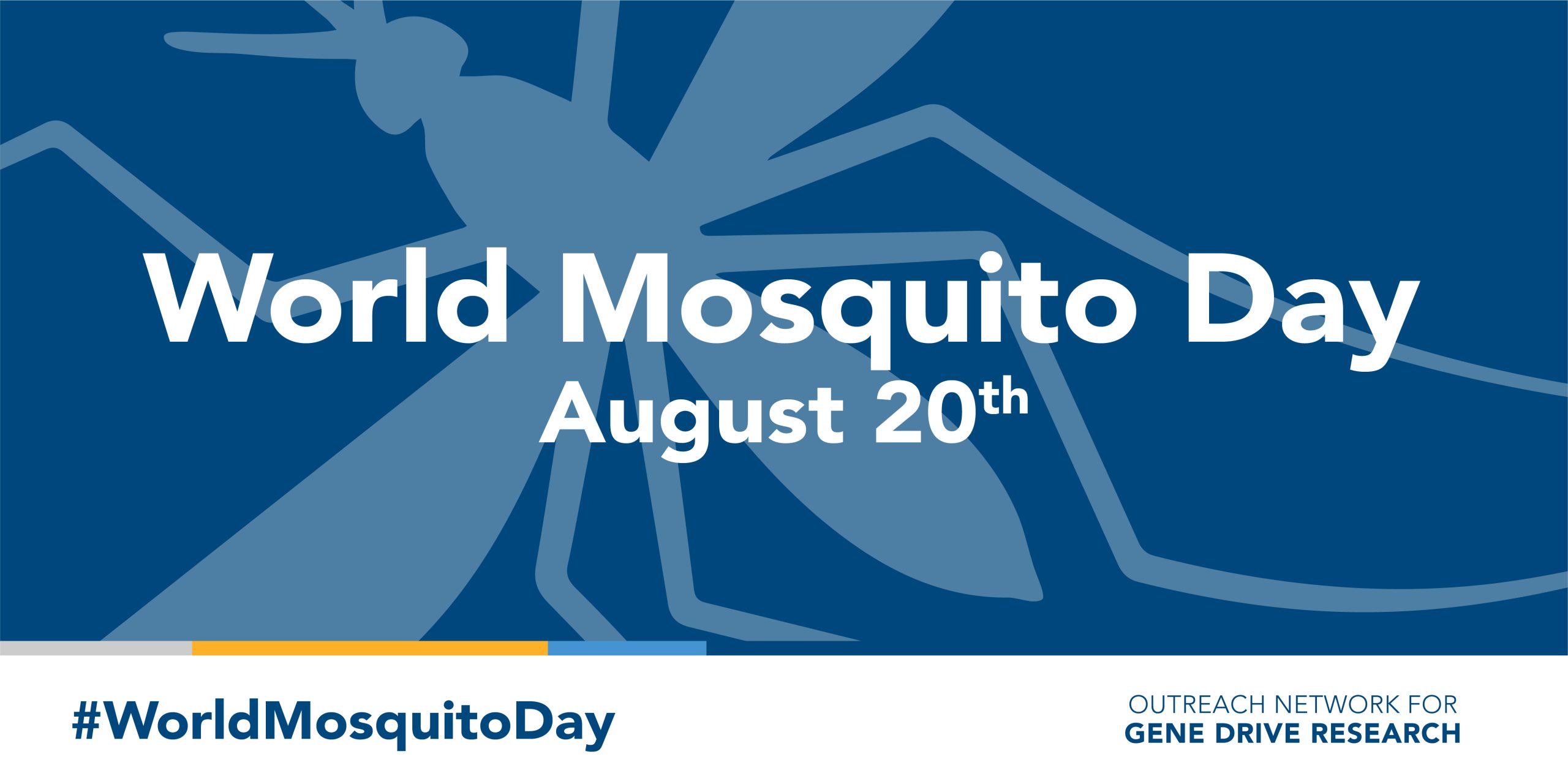
World Mosquito Day presents us with the opportunity to raise awareness of the threat still posed by mosquito-borne diseases worldwide and to spotlight ongoing efforts in the fight against the world’s deadliest creature. This World Mosquito Day, we are highlighting the profiles of 13 researchers working on innovative approaches to tackle vector-borne diseases at the source by targeting mosquitoes.

Andrea (Andie) Smidler, Postdoctoral Scholar, University of California San Diego (UCSD)
“Did you know that if you hum specific pitches at a swarm of caged male Anopheles gambiae mosquitoes, you can make them ‘dance’?”
My life’s work has been dedicated to developing new tools to control mosquitoes that are vectors of disease. For over a decade, my work has been focused on developing genetic vector control technologies in the African malaria mosquito Anopheles gambiae, to control this deadly mosquito through the precision of genetic engineering. During my time at the University of California San Diego, I have developed two new genetic vector control technologies: pgSIT and Ifegenia. These eco-friendly, chemical-free, and species-specific technologies, offer much promise as they could help us move one step closer to lessening our reliance on insecticides. Targeting the mosquito has been shown to be the best way to control malaria spread, however insecticide resistance is emerging at an alarming rate, making developing next-generation vector control tools of the utmost importance.
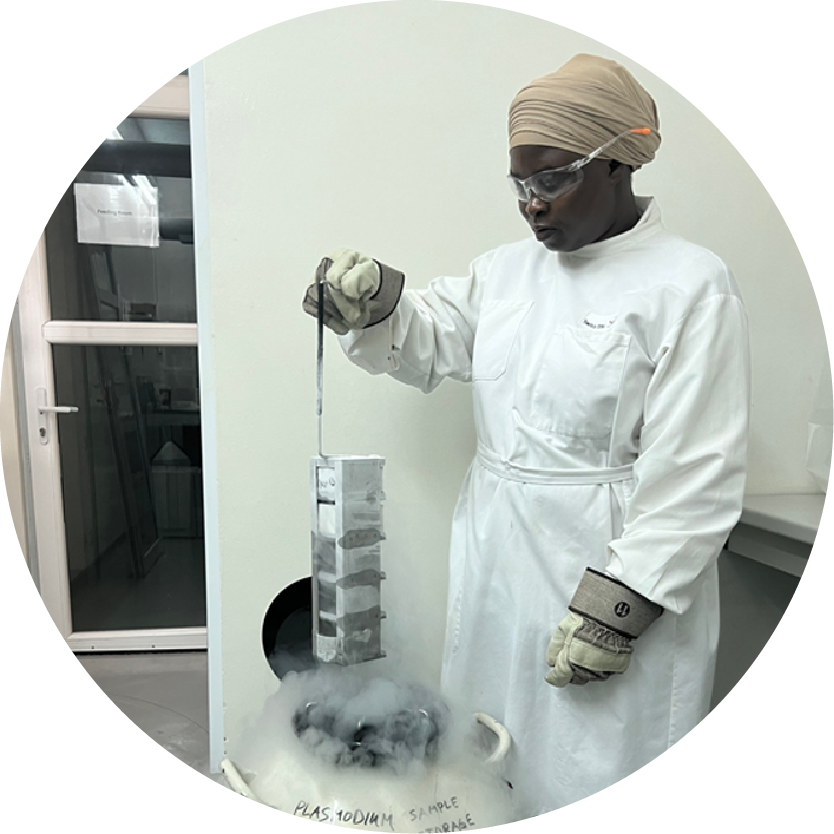
Fatuma Matwewe, Research Scientist, Ifakara Health Institute (IHI)
“Did you know that the first transgenic mosquito in Africa was produced in Tanzania? This mosquito strain carries a genetic modification that makes mosquitoes unable to transmit malaria.”
Coming from Tanzania – one of the four countries in Africa that accounted for just over half of all malaria deaths globally in 2021, according to the 2022 World Malaria Report – I am well aware of the devastating effects of malaria. As a research scientist at the Ifakara Health Institute, I am working in the field of genetic biocontrol, and particularly on gene drive technology, a novel tool targeting malaria-transmitting mosquitoes which could potentially be used for malaria elimination. I am currently working with Transmission Zero, a global malaria research programme led by scientists at Imperial College London and the Ifakara Health Institute, in partnership with the Tanzanian National Institute of Medical Research. I oversee the biosafety aspect and documentation of biosafety level 3 containment facilities. I also perform microinjections, gametocytes culturing, and molecular entomology assays. I am proud to have been part of the work with Transmission Zero to generate the first transgenic mosquito strain to be made in Africa, a major scientific breakthrough, which paves the way for the potential addition of new tools to aid existing efforts to fight malaria on the continent.
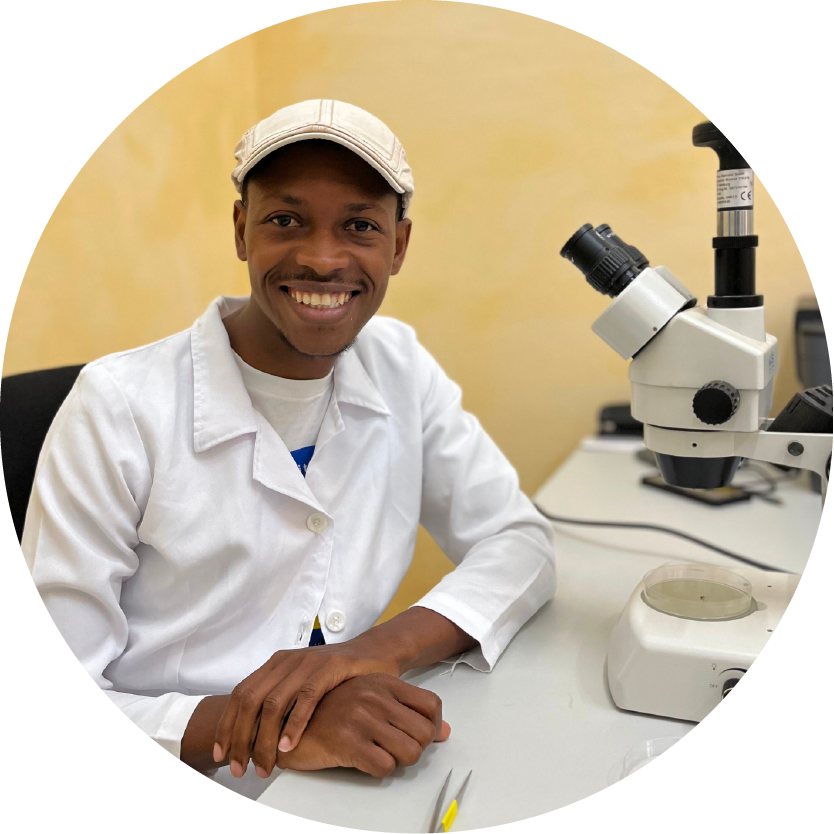
Ivan Mugeni, Insectary Assistant, University of California Malaria Initiative (UCMI)
“Did you know that there is no limit to the number of people a single mosquito can bite in one night for as long as her blood meal is not sufficient?”
Having experienced the agony and pain of malaria infection as an adult, I became acutely aware of the suffering experienced by countless young children who endure multiple episodes of this disease. The thought that some do not survive this suffering is profoundly disturbing to me. My work at the Vector Genetics Laboratory, University of California, Davis, revolves around finding more effective malaria control tools by conducting laboratory experiments on various aspects of the biology of genetically engineered mosquitoes. This work is part of the University of California Malaria Initiative (UCMI). I also work on establishing new laboratory colonies of Anopheles mosquitoes collected directly from the field, and participate in field entomology studies at our sites in São Tomé and Príncipe (STP), where I recently spent a month working with a team from UCMI to conduct a mark-release-recapture experiment on the island of Príncipe. Though considerable progress has been made in reducing malaria using existing tools, recent trends indicate a slowdown in this progress. One of the major challenges we face is that mosquitoes are evolving both physiological and behavioral resistance to insecticides. A potential solution to this problem is the application of modern molecular genetics to modify natural mosquito populations in a manner that renders them resistant to malaria parasite infection, thereby breaking the transmission cycle. I firmly believe that embracing genetic tools and self-sustaining novel innovations will complement existing methods and help bridge the gaps, ultimately accelerating our progress towards zero malaria transmission.

Joshua Ang, Postdoctoral Research Fellow, University of York
“Did you know that Aedes aegypti mosquitoes are one of the main disease-spreading mosquitoes, impacting millions of people worldwide each year through diseases like dengue, chikungunya, yellow fever, and Zika?”
Aedes aegypti mosquitoes are a key carrier of several viruses including yellow fever, dengue, chikungunya, and Zika virus. The focus of my work lies in combating mosquito-borne diseases through scientific research. Specifically, my research at the University of York revolves around the development of innovative genetic methods that specifically target Aedes aegypti mosquitoes while leaving other mosquito species and insects unaffected. The two main approaches I am exploring are reducing the Aedes aegypti population in localised areas through population suppression or transforming the targeted Aedes aegypti population into one that can no longer transmit diseases, known as population modification. If these methods are proven successful, they could herald a new era of genetic biocontrol, surpassing the effectiveness and cost-efficiency of current control measures.
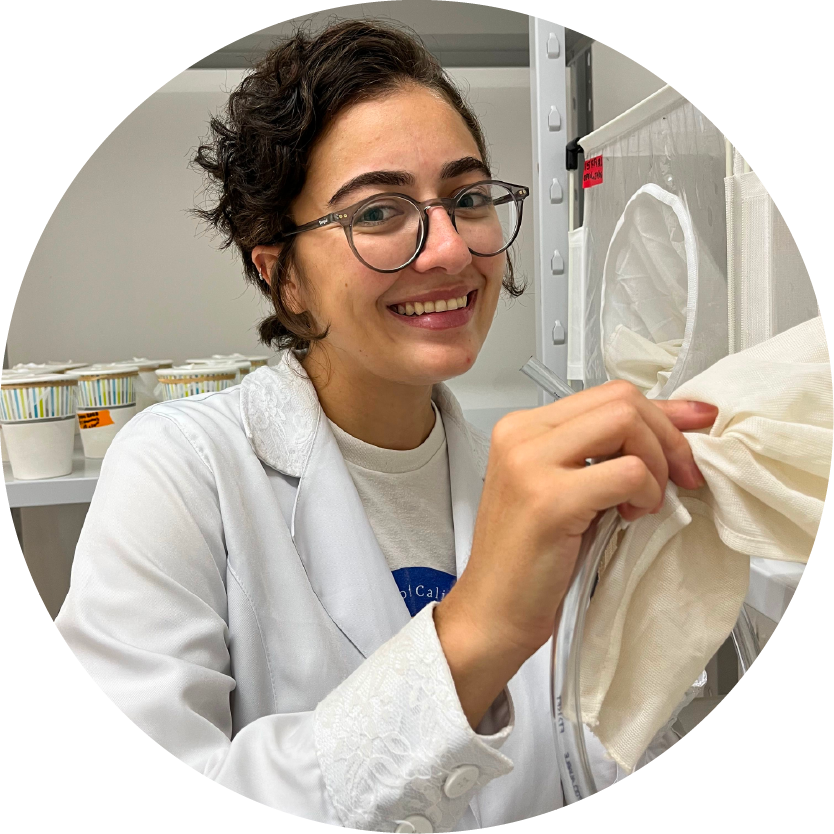
Maria Júlia Maciel Corrêa, Field Entomologist, University of California Malaria Initiative (UCMI)
“Did you know that one of the most important enemies of Anopheles mosquitoes is another mosquito? Larvae of the genus Toxorhynchites are voracious predators of larvae of other mosquito species.”
As the daughter of a freshwater fisherman in a small town, I developed an interest in aquatic biology from a young age. As a child, I wanted to understand how aquatic communities work and what role each group played in the overall ecology. During my academic training, my research focused on the biology and ecology of different aquatic organisms, with a focus on the predators of medically important mosquito species. I now work as a field entomologist for the University of California Malaria Initiative (UCMI), whose goal is to contribute to the elimination of malaria by developing genetically modified mosquitoes that are unable to transmit the malaria parasite. As a member of UCMI’s field biology team, I am currently based in São Tomé and Príncipe, where I participate in baseline bioecological studies focused on Anopheles coluzzii, the main malaria mosquito vector on these islands. One of my projects focuses on understanding the aquatic communities that coexist with the immature stages of Anopheles coluzzii in local breeding sites. This assessment is useful to identify potential impacts that could result from the introduction of genetically engineered mosquitoes into the environment. Working with UCMI has allowed me to pursue my interest in aquatic biology while exploring this novel method of eliminating malaria, a new approach to fighting mosquito-borne diseases combining safety and effectiveness.

Michelle Anderson, Senior Research Scientist, University of York
“Did you know that there are over 3,500 species of mosquitoes, but only a few percent of these bite humans, and just a handful are responsible for the vast majority of mosquito-borne illnesses?”
The spread of Anopheles stephensi mosquitoes poses a significant threat to malaria elimination in Africa. This urban adapted mosquito is the major vector of malaria in India and Pakistan and has now invaded the horn of Africa. Up until recently, most malaria cases in sub-Saharan Africa were transmitted by mosquitoes which live in more rural areas. My current research is focused on exploring new tools and methods for investigating mosquitoes that are main vectors of diseases, to further our understanding of the mechanisms by which they can spread disease and put a stop to it. We are currently working on developing a local gene drive in Anopheles stephensi mosquitoes. We are also working to target the mosquito vector Aedes aegypti, which transmits viruses such as dengue virus, Zika virus and chikungunya virus, by generating a transgenic mosquito which cannot transmit these viruses. The troubling spread of Anopheles stephensi in Africa means we may begin to see malaria outbreaks in the large metropolitan areas in this region. Furthermore, the continued use of insecticides to control malaria transmitting mosquitoes is leading to increased insecticide resistance, rendering this method less and less effective. New tools such as gene drive technologies offer much promise to help address these emerging challenges and could complement the existing toolbox and help defeat vector-borne diseases.

Michaela Dermendjieva, Postdoctoral Research Associate, University of York
“Did you know that Aedes aegypti mosquitoes can be infected simultaneously with different flaviviruses? Flaviviruses are arthropod-borne viruses that cause hundreds of millions of infections annually.”
The health burden associated with flaviviruses worldwide is immense. The term “flavivirus” originates from the Latin word flavus which means “yellow” and is so named because of the tendency of yellow fever virus to cause jaundice in humans. Flaviviruses are a class of RNA viruses that include important human pathogens transmitted by mosquitoes such as dengue, Zika and yellow fever viruses. My research work is focused on developing new tools for flavivirus control using synthetic biology and mosquito engineering. We are currently working on developing a genetically engineered mosquito with a molecular flavivirus-specific sensor coupled with a gene-encoded mechanism. Upon infection with a flavivirus, this system causes the mosquito to secrete a toxin which makes it unable to fly, and ultimately, to survive. It is a highly sophisticated system which could help to selectively control infected mosquitoes within a target population. Nearly four billion people are at risk of infection with dengue viruses alone, and Zika virus is on the World Health Organization’s list of priority diseases. There is a great need to develop new and more effective tools and strategies to limit the transmission of flaviviruses and other mosquito-borne diseases. Our hope is that the technology we are working on could be used in the future to prevent outbreaks.

Poppy Pescod, Postdoctoral Research Associate, Liverpool School of Tropical Medicine (LSTM)
“Did you know that the mosquito genome contains 280 million As, Ts, Gs and Cs – and that changing just one of them can make a mosquito resistant to insecticides?”
Malaria is on the rise in many countries and remains a deadly threat to millions of people globally. The need to double down on efforts to eliminate this disease is abundantly clear. My research is focused on the development of new ways of controlling malaria-transmitting mosquitoes. At the Liverpool School of Tropical Medicine, my work involves using a genetic editing tool called CRISPR to investigate the tiny genome changes that can make mosquitoes resistant to insecticides. Using the same toolkit, we are also developing genetic control strategies called gene drives, which can reduce mosquito numbers quickly and without impacting other insects or animals. While insecticide-treated bed nets have made an incredible difference to reducing malaria around the world, their long-term use has produced widespread resistance in wild mosquito populations. The discovery of CRISPR and its use in gene editing opens up a wide avenue of potential new control strategies which we hope will help eliminate malaria in our lifetime.
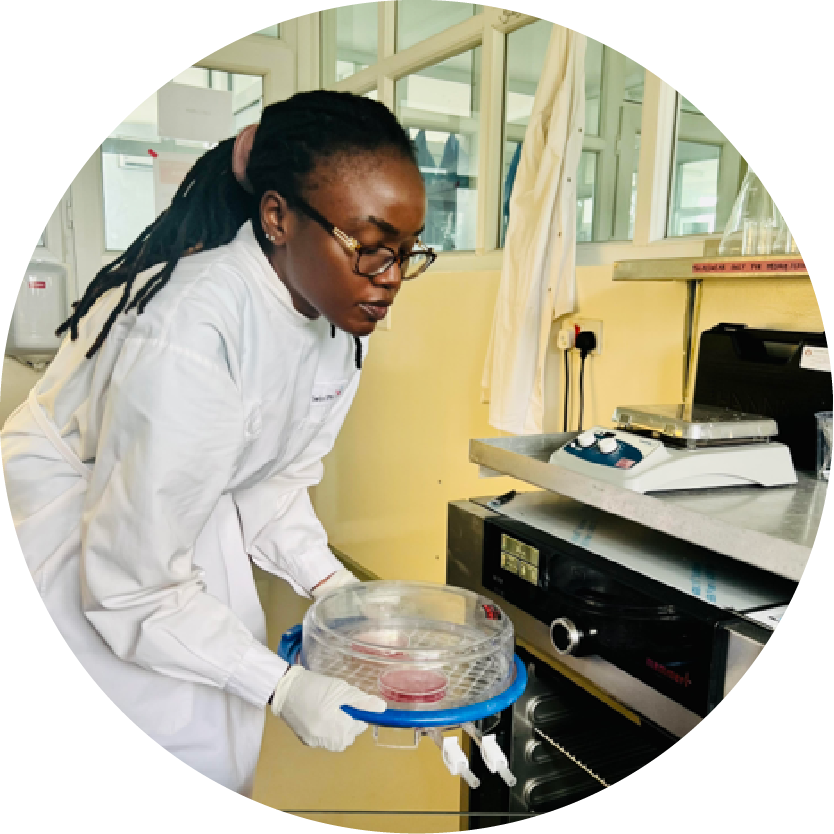
Prisca Kweyamba, Research Scientist, Ifakara Health Institute (IHI)
“Did you know mosquitoes are considered the deadliest animal in the world because they transmit malaria, causing hundreds of thousands of deaths every year, particularly in Sub-Saharan Africa?”
Malaria continues to pose a huge public health threat in Tanzania, the country where I grew up and where I currently work. Having witnessed the catastrophic impacts of this disease, I joined the Ifakara Health Institute to contribute to the scientific research being done to explore novel methods and approaches that could help eliminate malaria. As a microbiologist and molecular biologist, I have always been interested in the biology of infectious diseases, and particularly malaria. At the Ifakara Health Institute, I am working on a project that is focused on developing a transgenic mosquito strain which disrupts the development of the malaria parasite within the mosquito. My role on this project includes conducting embryonic microinjections, asexual and gametocyte culturing, mosquito infection assays and transmission experiments, as well as assisting in general molecular activities in the laboratory. The existing resistance to insecticides and antimalarial drugs observed in sub-Saharan Africa and other parts of the world demonstrates the need to expand our malaria control toolbox and explore novel vector control approaches.

Tim Harvey-Samuel, Team Leader: Arthropod Genetics, The Pirbright Institute
“Did you know that Culex mosquitos feed on a wide range of species including birds, mammals and even reptiles? This makes them important ‘bridge vectors’ often spreading new diseases between these groups.”
Mosquitoes are major vectors of human disease. Culex mosquitoes, for instance, are the primary vectors of a range of dangerous diseases, notably West Nile virus (WNV). Part of my research at The Pirbright Institute is focused on developing novel tools to tackle invasive mosquitoes, including the West Nile virus mosquito Culex quinquefasciatus and the dengue fever mosquito Aedes aegypti. We are genetically engineering mosquitoes to create control strategies capable of managing these vectors in a more efficient and sustainable way. Currently, we are working on building virus-refractory transgenes and gene drive systems to spread these transgenes through target populations. Conventional control methods, including insecticides, have proven insufficient to control both these disease-carrying mosquitoes. Next-generation technologies such as virus-refractory gene drives could provide a much-needed additional method for reducing the disease burden posed by these mosquitos.

Valerie Odon, Research Associate, University of York
“Did you know that mosquitoes are acrobatic flyers? They can fly at speeds of up to 2.5 mph and fly backward and sideways! This helps them manoeuvre through various obstacles in search of their next meal.”
Mosquito-borne diseases, such as malaria, dengue fever, Zika virus, and chikungunya, continue to pose significant global health challenges. At the heart of my research is the development of a transgenic mosquito that is equipped with a natural defence mechanism against chikungunya virus, which reduces the mosquito’s ability to transmit the virus and could potentially lead to a sustained reduction in disease transmission over time. This research may have broader implications beyond chikungunya. If successful, it could be adapted to combat other mosquito-borne diseases, offering a versatile and adaptable approach to disease control to reshape our approach to vector-borne disease prevention and open new avenues for transformative public health interventions. Despite tremendous progress in controlling mosquito-borne diseases, traditional approaches have limitations, necessitating a paradigm shift towards novel and innovative strategies. The importance of finding new approaches that target the mosquito vector cannot be overstated.

Victor Balyesima, Assistant Insectary Manager, Uganda Virus Research Institute, Target Malaria
“Did you know that out of more than 500 Anopheles mosquito species, there are 3 species that are responsible for most malaria transmissions in Africa? These are Anopheles gambiae, Anopheles coluzzii and Anopheles arabiensis.”
Malaria is a mosquito-borne infectious disease with a devastating impact in Uganda, where I live and work. At the Uganda Virus Research Institute, we collect wild mosquitoes and analyse them in our laboratory. The collected mosquitoes are kept and reared in cages at our insectary, which meets international guidelines and national regulations for the containment of insects, called Arthropod Containment Level 2 (ACL2). These studies help us understand the behavior of local malaria-transmitting mosquitoes. The data obtained is important as it provides us with baseline information about the characteristics of the malaria mosquito and helps guide our research to develop innovative tools for malaria control. I am happy to be working with the insectary team and the Target Malaria project towards the development of new malaria control tools aimed at creating a malaria-free world.

Zachary Stavrou – Dowd, Research Technician, Liverpool School of Tropical Medicine (LSTM)
“Did you know that Anopheles originates from a Greek word meaning “useless”? Ironically, these seemingly “useless” mosquitoes are among the world’s most dangerous animals and have been extensively studied.”
Significant progress has been made in the fight against malaria. However, an alarming rise in insecticide resistance among the disease-carrying mosquitoes remains a daunting challenge. This has halted the decline of malaria cases, and many people continue to suffer in endemic areas. My research is focused on exploring novel solutions to this problem and specifically on finding new targets in the malaria-transmitting mosquito that can be leveraged to prevent transmission of the disease. When a female mosquito takes a blood meal, she ingests a large amount of blood compared to her small body size. The problem is that the blood she ingests may carry one of several diseases such as malaria, dengue, or Zika, just to name a few. Using CRISPR genome editing technology, we were successfully able to target crucial enzymes, whose removal prevents mosquitoes from surviving after feeding on blood. This process represents an excellent target for interventions aimed at interrupting malaria transmission. The development of new sustainable measures to address issues such as that of the mosquitoes’ evolving resistance to commonly used insecticides is of paramount importance to halt the spread of vector-borne diseases.
Recent posts
